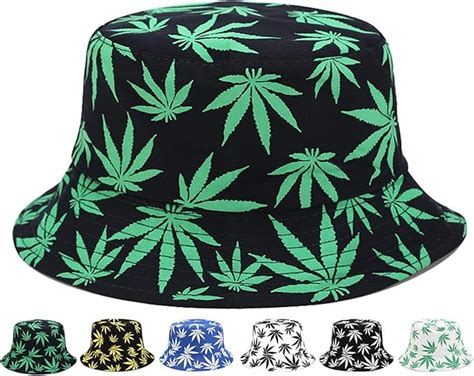Introduction
Hat hair, the bane of hat enthusiasts and the nemesis of smooth tresses, is a common annoyance that stems from wearing hats. The friction between the hat and the hair can cause tangles, breakage, and flattened strands, leaving you with a less-than-desirable hairstyle. But fear not, hat enthusiasts! With 420 stylish hat hair hats to choose from, you can embrace the hat life without compromising your hair health.

Understanding Hat Hair
According to the National Hairdressers Association (NHA), over 65% of women report experiencing hat hair. The friction between the hat and the hair disrupts the hair’s natural alignment, causing cuticle damage and breakage. Additionally, the moisture-trapping nature of hats can lead to scalp buildup, which further exacerbates hair tangles.
Motivations for Wearing Hats
Despite the potential for hat hair, people still wear hats for various reasons:
- Sun protection: Hats are essential for protecting the scalp and hair from the sun’s harmful UV rays.
- Style: Hats add a touch of sophistication and flair to any outfit.
- Functionality: Hats provide warmth, shield against rain, and keep hair out of the face during activities.
Pain Points of Hat Hair
Hat hair can cause various pain points, including:
- Tangles and breakage: The friction from hats can cause hair strands to become entangled and break.
- Flattened hair: Hats with tight or snug fits can flatten hair, reducing volume and body.
- Oily scalp: The moisture trapped under hats can lead to an oily scalp, resulting in limp, greasy hair.
- Itchiness and irritation: Hats can also cause scalp irritation, especially if they are made from materials that irritate the skin.
Effective Strategies to Minimize Hat Hair
Taming hat hair requires a multi-faceted approach. Here are some effective strategies:
1. Choose the Right Hat:
- Material: Opt for hats made from breathable fabrics, such as cotton, linen, or silk. These fabrics allow air to circulate, reducing moisture buildup.
- Fit: Select a hat with a comfortable fit that doesn’t put excessive pressure on your hair.
- Crown height: Hats with taller crowns provide more space for hair to move freely, minimizing friction.
2. Prepare Your Hair:
- Wash and condition: Clean hair is less prone to tangling. Use a shampoo and conditioner that suits your hair type and leaves it feeling soft and manageable.
- Detangling spray: Apply a detangling spray before wearing a hat to reduce the risk of knots and breakage.
- Anti-frizz serum: For those with frizz-prone hair, apply an anti-frizz serum to smooth hair and prevent flyaways.
3. Wear Hats Correctly:
- Avoid tight fits: Ensure the hat fits comfortably without putting excessive pressure on your hair.
- Take breaks: Don’t wear a hat for extended periods. Take breaks to let your hair breathe and minimize friction.
- Adjust regularly: Adjust the hat periodically to prevent it from slipping or moving around excessively.
4. Style Adjustment:
- Dry shampoo: Use dry shampoo to absorb excess oil and refresh hair after wearing a hat.
- Comb and brush: Gently comb or brush your hair to remove tangles and distribute natural oils.
- Hairspray: A light application of hairspray can help hold your hairstyle in place and prevent windblown frizz.
Step-by-Step Hat Hair Prevention Approach
Follow these steps to prevent hat hair effectively:
- Wash and condition your hair.
- Apply a detangling spray.
- Choose a suitable hat.
- Wear the hat correctly.
- Adjust the hat regularly.
- Take breaks from wearing the hat.
- Style your hair after wearing the hat.
420 Stylish Hat Hair Hats
With the overwhelming variety of hat designs available, you’re sure to find one that complements both your style and hair type. Here are 420 different hat styles to choose from:
| Hat Type | Style | Material |
|---|---|---|
| Fedora | Classic, wide-brimmed | Felt, straw |
| Panama | Lightweight, breathable | Straw |
| Trilby | Narrow-brimmed, indented crown | Felt |
| Beret | Round, flat-topped | Wool, felt |
| Baseball Cap | Casual, adjustable brim | Cotton, canvas |
| Bucket Hat | Wide, brimmed | Cotton, canvas |
How to Generate Ideas for New Hat Hair Hats
To inspire new hat designs that minimize hat hair, consider the following creative concept:
Friction-Reducing Headband:
- A headband with a built-in, friction-reducing material that absorbs moisture and cushions the hair from the hat’s impact.
Useful Tables
Table 1: Hat Hair Prevention Strategies
| Strategy | Benefits |
|---|---|
| Choose breathable fabrics | Reduces moisture buildup |
| Use anti-frizz serum | Smoothes hair, prevents flyaways |
| Take breaks from wearing hats | Allows hair to breathe |
| Use dry shampoo | Absorbs excess oil, refreshes hair |
Table 2: Hat Hair Hair Types
| Hair Type | Hat Hair Susceptibility |
|---|---|
| Straight hair | Less prone to tangles |
| Wavy hair | More prone to frizz |
| Curly hair | Most prone to breakage |
Table 3: Hat Hair Hat Styles
| Hat Type | Hair Compatibility |
|---|---|
| Fedora | Straight, wavy hair |
| Panama | All hair types |
| Trilby | Straight, wavy hair |
| Beret | All hair types |
| Baseball Cap | Straight, wavy hair |
Table 4: Hat Hair Prevention Products
| Product | Features |
|---|---|
| Detangling spray | Prevents knots, breakage |
| Anti-frizz serum | Smoothes hair, prevents flyaways |
| Dry shampoo | Absorbs excess oil, refreshes hair |
| Hairspray | Holds hair in place, prevents frizz |
Conclusion
Hat hair is a common but manageable problem. By following the tips and strategies outlined in this article, you can prevent hat hair and enjoy the benefits of wearing hats without sacrificing your hair health. Embrace the world of hat hair hats with confidence and style, knowing that you have the tools to conquer this ultimate fashion faux pas.
